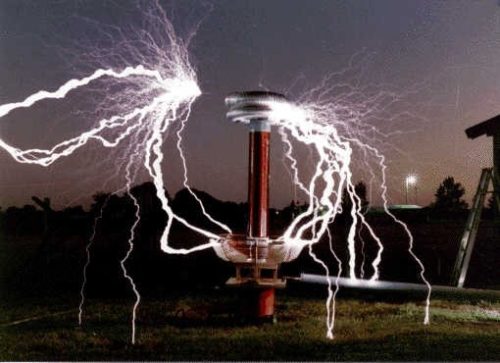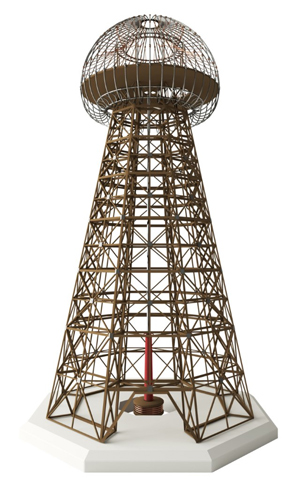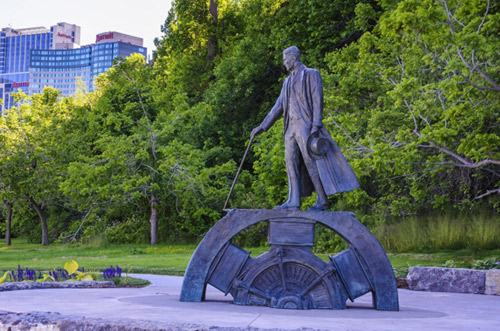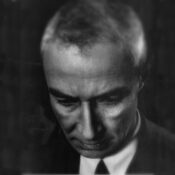
“Genius is never understood in its own time.” That quote, attributed to Bill Watterson, could easily apply to Nikola Tesla. Born on this day in 1856, Tesla struggled for recognition and credibility at various points in his life. His reputation, however, grew geometrically after his death. So much so that he inspired the names of bands and electric cars, has been cast as a comic book hero, influenced new genres of fiction, and was portrayed on film by fellow genius David Bowie.
This unlikely story started in Austria. Tesla was born an ethnic Serb, son of an Eastern Orthodox priest and a mother with mechanical aptitude and incredible memory. This gift for recall and mental calculation soon became evident in Tesla himself; his teachers accused him of cheating for his ability to do integral calculus in his head.
Tesla’s school and university years were marked by turmoil. Battling health concerns like cholera and exhaustion, a gambling problem, and his own propensity to overwork, Telsa impressed those around him with his mind and high grades. Though he passed nearly twice as many exams as he need to graduate, e eventually lost his scholarship to Austrian Polytechnic due to the gambling and never graduated. He went on to work for the Budapest Telephone exchange, making improvements with his own ideas, before taking a job in Paris with Continental Edison.
While at ConEd, Tesla used his knowledge of engineering and physics to improve machines and processes, such as making repairs to damaged dynamos on ocean liners. He was assigned to building new dynamos and to general troubleshooting around Europe. When his boss Charles Batchelor was called back to the U.S. to manage Edison Machine Works in New York City, Batchelor brought Tesla with him. Thought he worked hard and was reportedly well regarded by Thomas Edison in one of their few interactions, Tesla left the job after six months. Tesla’s departure has been debated, though most scholars ascribe it to a mix of unpaid royalties that he thought he deserved and Edison’s reluctance to fund some of Tesla’s ideas.
After Edison, Telsa began a run of involvement with utilities as he worked on an arc lighting system and what would become his AC induction motor. He formed his own company, Tesla Electric Light and Manufacturing, but his partners split, leaving him broke. He formed Tesla Electric Company in Manhattan with new partners in 1887. The new partners helped him secure a patent on the AC motor, and it brought him to the attention of Westinghouse Electric. Tesla licensed some of his work to them and signed on as a consultant for $2,000 a month (a payout that would be worth more than $50,000 a month today). Unfortunately, competition between all of the various electric utilities (known as the “War of the Currents”) hurt Westinghouse’s cash flow. Tesla was forced to renegotiate his royalty deals, though his patent licensing had already made him wealthy.

By 1889, Tesla got to work in a group of labs he set up in Manhattan. This kicked off a very productive period for the inventor. In 1891, he became an American citizen and patented his famous Tesla coil, the transformer circuit known for its distinctive shape. During this period, Tesla conducted experiments in wireless lighting, as well as continuing development on different approaches to powering motors and generating electricity. He became a favorite at trade shows and exhibitions, demonstrating his work for journalists and spectators. In 1893, Tesla consulted with the Niagara Falls Cataract Construction Company on how best to mine power from the falls.

The Nikola Tesla Company formed in 1895, featuring a number of the allies and supporters that Tesla had accumulated as partners and board members. They aimed to market and patent his inventions, though it would ultimately be the licensing of patents to others that generated the most revenue.
Tesla’s interest in wireless power continued. He dabbled in X-Rays, claimed to have discovered “cosmic rays,” and focused on radio waves. He demonstrated a radio-controlled boat in Madison Square Garden in 1898, causing a minor sensation among disbelieving onlookers. Tesla tried to sell the U.S. Armed Forces on the advantages of radio-controlled torpedoes, but they passed at the time. After World War I, remote radio control in military applications became a regular practice.
The inventor’s obsession with wireless power later led him to build a lab in Colorado, as he theorized that the higher altitude and lower pressure air would be more conducive to his signals. He built massive coils that wouldn’t have fit in his Manhattan spaces. Between 1899 and 1900, Tesla reported detecting unusual signals that many believed to be extraterrestrial in origin, though some believe that he might have actually accidentally intercepted signals generated by his future nemesis Guglielmo Marconi‘s radio tests in Europe.

Tesla’s radio transmission pursuit resulted in his building the Wardenclyffe tower, an experimental wireless transmission station, in New York; he financed the project with money invested by J. Pierpont Morgan. As Tesla worked, Marconi managed to send a signal first. Although Tesla alleged that Marconi had stolen his designs, investors flocked to Marconi. Tesla ran into money trouble from mounting debts and health problems and eventually lost the Wardenclyffe facility to foreclosure. Tesla sued Marconi in 1915; Tesla lost that particular, but it did open other avenues by which patents that Marconi had been awarded were restored to Tesla and others in 1943.

For years afterward, Tesla would struggle with money and recognition, a period documented in numerous biographies like Tesla: Inventor of the Electric Age by W. Bernard Carlson. Although he continued to win awards and honors, his role in the creation of radio would be diminished. He ran through seemingly endless cycles of chasing investments and losing funds. He lived in series of hotels, sometimes simply leaving rather than paying. By 1934, he was living in the Hotel New Yorker, but Westinghouse continued to pay him $125 a month and his rent (though whether this was out of kindness or a settlement has been debated).
In 1931, on the occasion of Tesla’s 75th birthday, he was featured on the cover of Time. This kicked off an annual tradition where Tesla would hold court for the press on his birthday, showing off inventions, telling stories of his roughly 300 patents, and offering new theories. One of the most famous was his announcement in 1934 that he’d created a “death ray” for border defenses; he didn’t show plans at the time, but they were later discovered in 1984. It was never actually demonstrated nor proven to work.
Tesla died alone in his hotel room on January 7, 1943. He was found by a maid two days later. Two days after that, the FBI descended to seize his belongings under the Alien Property Custodian mandate that was in effect due to World War II. The cataloging of the items fell to M.I.T. professor John G. Trump, future uncle of Donald Trump. The public marked Tesla’s passing in many ways, including a eulogy read on the radio by New York City mayor Fiorello La Guardia. More than 2,000 people attended a state funeral on January 12.
In the years that followed, Tesla’s reputation grew. His contributions to radio gained more attention due to work from scholars and scientists. The hard-rock band Tesla not only named themselves after the inventor, but would include biographical information in their album liner notes; their double-platinum 1989 album, The Great Radio Controversy, specifically recounted the Tesla/Marconi battle. Telsa also become a prominent figure in the Steampunk fiction movement; his inventions and theories melded perfectly with the Victorian science-fiction aesthetic. The inventor has also become a favorite character in comics and films. David Bowie played him in Christopher Nolan’s 2006 hit The Prestiege, and he was depicted, along with Edison and others, as a founder of Disney’s Tomorrowland in 2015. Matt Fraction and Steven Sander’s comedic 2006 graphic novel The Five Fists of Science depicts Tesla as a hero fighting the forces of evil alongside Mark Twain. And, of course, there’s Tesla, Inc., the company that specializes in electric vehicles and is slated to produce more than 150,000 cars this year.
While Tesla spent years fighting for funding and recognition, it now appears that his name is firmly ensconced in both history and culture. Whether you consider the radio or electricity or, now, pop culture, the brilliant man left his mark.
Become a Saturday Evening Post member and enjoy unlimited access. Subscribe now



